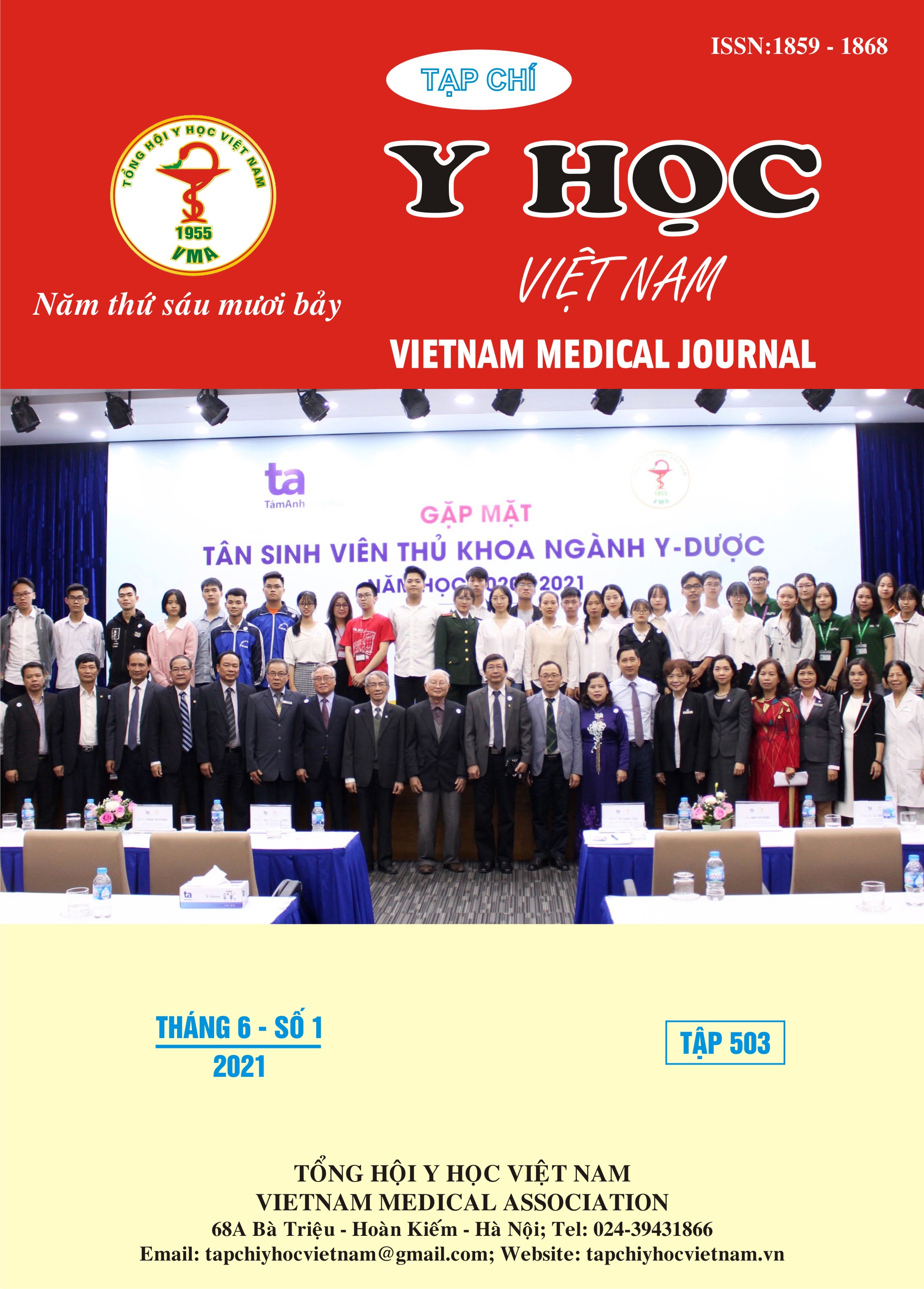EPIDEMIOLOGICAL CHARACTERISTICS AND STUDY OF FIRST AID FOR CHILDREN WITH MALAYAN PIT VIPER BITES HOSPITALIZED IN CHILDREN HOSPITAL 1
Main Article Content
Abstract
Objectives: To describe the epidemiological characteristics and study of first aid children with malayan pit viper bites. Methods: Descriptive study was conducted on 54 medical records of children with snake bites hospitalized in Children Hospital 1 from 01/01/2011 to 31/12/2020. Results: the average age is 8.5 years old (2 years old - 15 years old), 6 years old and above accounted for 68.5%. The proportion of male and female is 1.8/1. Accidents occur year-round especially during the rainy months of 66.8% from May to November, 77.8% are bitten between 12 hours and 24 hours. Binh Phuoc is the province which has the most Malayan pit viper bites hospitalized (29.6%). 53.7% of the children were biten around and inside houses. The majority accidentally bit 96.3%, 57.4% of the cases brought the viper. More than 70% of the bites were in the legs, especially 61.1% of the feet. 72.2% of first aid cases were incorrect (common are used garrot, skin incision, venom attracting, drug laying ...). 77.7% of hospitalizations in 24 hours after bite. Conclusions: Patients who have a charlatan have a 3.2 times higher incidence of severe intoxication (KTC 95%: 1.4-7.5), statistically significant difference, p = 0.002. The later the hospitalization time, the higher the incidence of severe intoxication, which is statistically significant with a p < 0.001.
Article Details
Keywords
snake bites, Malayan pit viper, first aid
References
2. Lê Thị Thùy Linh (2016) "Tình hình sử dụng huyết thanh kháng nọc rắn tại Bệnh viện Nhi Đồng 2 từ năm 2010 đến 2014". Tạp chí Y học TP. Hồ Chí Minh, 20 (4), tr.79-86.
3. Ngô Ngọc Quang Minh, Vũ Huy Trụ (2005) "69 trường hợp rắn độc cắn tại Bệnh viện Nhi Đồng 1". Y học Thực Hành (503), 2, tr.55-58.
4. Mã Tú Thanh, Phạm Văn Quang (2017) "Đặc điểm dịch tễ, lâm sàng, cận lâm sàng ở bệnh nhi bị rắn lục tre cắn tại Bệnh viện Nhi Đồng 1 ". Tạp chí Y học TP. Hồ Chí Minh, 21 (4), tr.252-259.
5. J. P. Chippaux, A. Massougbodji, A. G. Habib (2019) "The WHO strategy for prevention and control of snakebite envenoming: a sub-Saharan Africa plan". J Venom Anim Toxins Incl Trop Dis, 25, e20190083.
6. Kanthika Kraisawat, Nattaya Promwang (2020) "Duration after Malayan Pit Viper Bite to Detect Coagulopathy in Songklanagarind Hospital". Journal of Health Science and Medical Research, 38, 93-101.
7. Nualnong Wongtongkam, Chitr Sitthi-amorn, Kavi Ratanabanangkoon (2005) "A Study of 225 Malayan Pit Viper Bites in Thailand". Military medicine, 170, pp.342-8.


